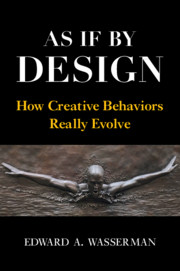
- Cited by 3
-
Cited byCrossref Citations
This Book has been cited by the following publications. This list is generated based on data provided by Crossref.
Leca, Jean-Baptiste 2023. Towards a three-level neo-Tinbergenian approach to object play: Structure, causes and consequences of a behavioral puzzle. Neuroscience & Biobehavioral Reviews, Vol. 152, Issue. , p. 105290.
Simonton, Dean Keith 2023. The Blind-Variation and Selective-Retention Theory of Creativity: Recent Developments and Current Status of BVSR. Creativity Research Journal, Vol. 35, Issue. 3, p. 304.
Stahlman, W. David and Catania, A. Charles 2023. Faustian bargains: Short‐term and long‐term contingencies in phylogeny, ontogeny, and sociogeny. Journal of the Experimental Analysis of Behavior, Vol. 119, Issue. 1, p. 192.
- Publisher:
- Cambridge University Press
- Online publication date:
- July 2021
- Print publication year:
- 2021
- Online ISBN:
- 9781108774895
- Subjects:
- Biological Psychology, Psychology, Cognition


